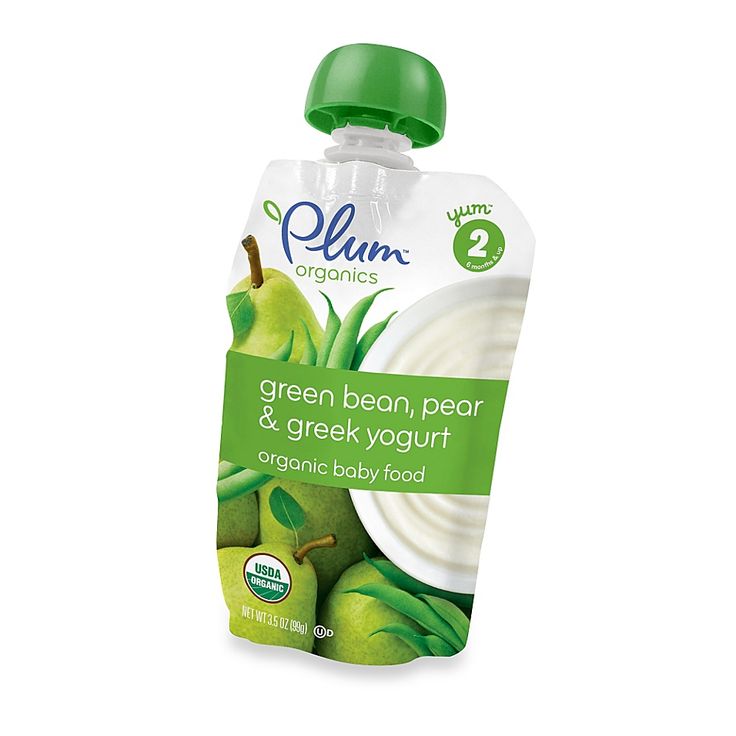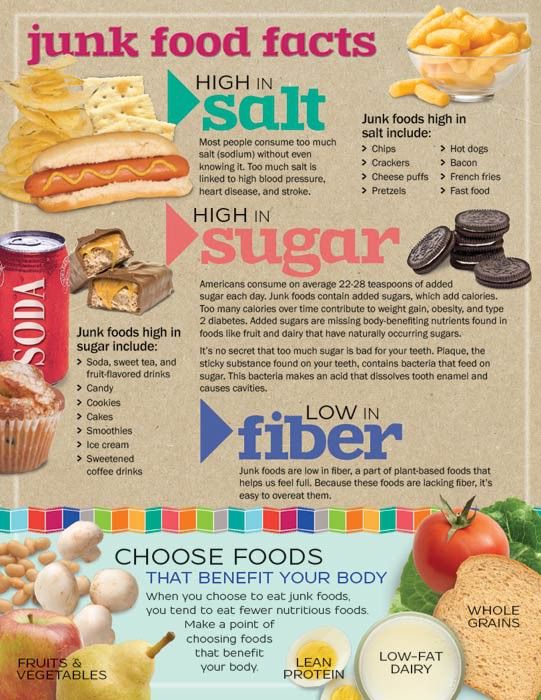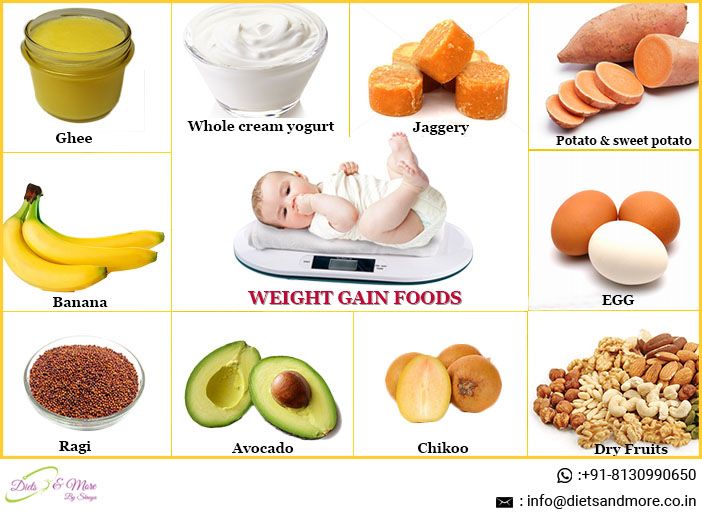Recommended first baby food
When to Start Baby Food
Starting solids is an exciting and important milestone in baby’s development—one that not only opens them up to a brand-new world of flavors and textures, but also puts them on the right path to growing healthy and strong. Here’s what you need to know about how and when to start baby food for a smooth transition.
In this article:
When to start baby food
How to start baby on solids
Best first foods for baby
Introducing allergenic foods
When to Start Baby Food
Knowing when to start baby food is both crucial and tricky. Starting baby on solids too early means you might increase the risk of choking, obesity and bellyaches, but introducing solids too late means you might slow baby’s growth and encourage an aversion to solid foods, among other conditions. Fortunately, doctors have zeroed in on a sweet spot for starting baby food, which is sometime between 4 and 6 months of age—though, ideally, baby should be receiving their nutrition exclusively from breast milk until the six-month mark, according to the American Academy of Pediatrics (AAP). How to tell if it’s time for starting solids for your little one? Baby will give you clues, including:
• Baby can sit in a high chair comfortably on their own. This is a major sign in terms of when to start baby food, says Lauren Kupersmith, MD, a pediatrician at Hassenfeld Children’s Hospital at NYU Langone in New York City. It means baby can hold their head up and doesn’t need to be propped up to stay in the upright position, which is important to avoid choking.
• Baby looks interested at mealtime. Babies likes to mimic what we do, so if your child likes to sit up like a big kid and watch you eat, then by all means let them try eating too.
• Baby can move food to the back of their throat to swallow. But if baby tends to push the food out of their mouth—not because they don’t like it, but because they can’t seem to get the food to where it needs to go—hold off on starting solids.
How to Start Baby on Solids
At 4 to 6 months, most of baby’s nutrition will still come from breast milk or formula, so don’t worry if baby doesn’t like eating food right away. Introducing solids is a gradual process, and every baby learns in their own time. Here are some general guidelines for how to start baby on solids:
Introducing solids is a gradual process, and every baby learns in their own time. Here are some general guidelines for how to start baby on solids:
• Feed baby with a spoon. Letting your child go at it with their hands may seem tempting (and super-cute), but it’s best that they learn the right way from the get-go. (And even then, be prepared to clean up more than a few messes!) Also, never put cereal (or any other food) in baby’s bottle—it’s a choking hazard.
• Start slowly. When introducing solids, a half spoonful will do at first—you may even want to talk baby through it (“Yummy!”). To make it easier for baby to get accustomed to the idea of swallowing solids, start mealtime with a little breast milk or formula, then offer some food (again, no more than a half teaspoon at a time) and finish off with more breast milk or formula. If baby cries or turns away when you present the spoon, try again some other time. Start off with introducing solids at one meal a day, then slowly work your way up. The morning is a good place to start, since baby is often hungriest at that time. When starting solids, baby typically won’t eat more than an ounce or two in one sitting.
The morning is a good place to start, since baby is often hungriest at that time. When starting solids, baby typically won’t eat more than an ounce or two in one sitting.
• Try new foods more than once. Since babies’ tastes will evolve, you may need to try a food 20 times before a baby actually likes it, says Kupersmith.
• Stick with the same food for three days before trying another one. This makes it easy to track whether baby is allergic to a particular food.
• Try foods in different forms. If baby doesn’t like pureed food, try it mashed. After all, baby is learning about new textures as well as new tastes. It may be a case of trial and error until you find a winner.
Best First Foods for Baby
Got baby safely strapped into the high chair and bib? You’re ready to finally start feeding baby solids! There aren’t any official food rules for babies starting solids, and there’s no scientific evidence suggesting you should introduce one type of food before another, assuming the foods aren’t choking hazards. Nevertheless, baby cereal (such as oatmeal, rice and barley) is an “easy training food,” says Kupersmith, which is why it’s often recommended as baby’s first food; you can always mix it with more milk to build up to a thicker consistency. Many doctors also recommend starting vegetables before fruits, but there’s no evidence that this would make babies like vegetables more when they grow up—babies innately love sweets, and the order of introducing solids to baby doesn’t change that.
Nevertheless, baby cereal (such as oatmeal, rice and barley) is an “easy training food,” says Kupersmith, which is why it’s often recommended as baby’s first food; you can always mix it with more milk to build up to a thicker consistency. Many doctors also recommend starting vegetables before fruits, but there’s no evidence that this would make babies like vegetables more when they grow up—babies innately love sweets, and the order of introducing solids to baby doesn’t change that.
So why not simply start introducing solids with something you think baby will like? Here are a few common first foods for baby that are healthy and easy to eat (and, in the case sweet potato and banana, also easy to digest). Whatever you decide to feed baby, mash it with a fork or puree before serving whenever introducing solids.
- Baby cereal, such as oatmeal, rice, barley
- Sweet potato
- Banana
- Avocado
- Apples
- Pears
- Green beans
- Butternut squash
If your child has been breastfeeding, check with your pediatrician about getting a jump on pureed chicken or beef when you’re starting solids. These foods contain easily absorbable forms of iron and zinc, which baby needs by 4 to 6 months, according to the AAP.
These foods contain easily absorbable forms of iron and zinc, which baby needs by 4 to 6 months, according to the AAP.
At around 9 months, baby should have already worked their way up to a variety of foods, including cereal, vegetables, fruits, meats, eggs and fish (see below regarding the last two). (Keep in mind, though, that baby will still get the majority of their nutrients from breast milk or formula until age one.) By now, baby will probably settle on three meals a day along with two snacks. Let them consume about 4 ounces of solids at each meal (equivalent to a small jar of strained baby food) and about half that amount for each snack.
Save honey and cow’s milk for after baby’s first birthday—there’s a risk for infant botulism with honey (a type of bacterial poisoning), and baby’s tummy isn’t prepared to digest large amounts of cow’s milk until they’re about one year old. Avoid adult processed foods and foods that are choking hazards (such as sticky foods, like large gobs of peanut butter; hard foods that are difficult to gum, like raw vegetables, nuts, seeds and popcorn; and round, slippery foods that haven’t been cut up, like grapes and cherry tomatoes). Instead, the first foods for baby, and those in the months that follow, should be soft and served mashed, pureed or (once baby seems ready to move up from the really mushy stuff) cut up into really little bits. “There’s pretty much free reign at that point,” Kupersmith says.
Instead, the first foods for baby, and those in the months that follow, should be soft and served mashed, pureed or (once baby seems ready to move up from the really mushy stuff) cut up into really little bits. “There’s pretty much free reign at that point,” Kupersmith says.
Introducing Solids Chart
Hesitant about improvising your first foods for baby? That’s okay too. If you prefer an “introducing solids chart” to help you plan out baby’s path, the guide below can come in handy.
Image: The Bump
Introducing Allergenic Foods
Much of the confusion around when to start baby food stems from questions concerning allergenic foods. These are foods that babies are most often allergic to. The major culprits include dairy, eggs, fish, peanuts and tree nuts. In the past, parents were advised to hold off on exposing baby to these foods, but now doctors recommend introducing them early, often and in age-appropriate format, which means starting off with purees and soft textures.
“Dairy is an easy starting point, given options such as yogurt and cheese,” says David Stukus, MD, director of the Food Allergy Treatment Center at Nationwide Children’s Hospital and a spokesperson for the American College of Allergy, Asthma, & Immunology. You can also try scrambled eggs in small amounts, although baby may not be too pleased with the texture at first.
As far as peanut products go, the National Institutes of Health issued new guidelines in 2017 that encourage parents of children at high risk for peanut allergies to incorporate them into baby’s diet at 4 to 6 months of age. Giving these babies peanut products before the age of one actually decreases their risk of developing a peanut allergy before age 5 by 81 percent, compared to kids who are introduced to peanuts later in life. Parents of kids without the food allergy risk can start peanut products whenever they’d like, as long as the nuts are in an age-appropriate form: Peanut butter can be thinned out with water or mixed into a fruit or vegetable puree, and peanut powder can also be mixed into cereal and fruits. Don’t give whole peanuts or pieces of peanuts, since they’re a choking risk.
Don’t give whole peanuts or pieces of peanuts, since they’re a choking risk.
Allergic reactions to food are never just a fluke; they will happen with every exposure. Symptoms can range from mild (such as a rash or vomiting) to severe (such as trouble breathing). If baby has a food allergy, you’ll notice a reaction within minutes or up to two hours after eating the problematic food, Stukus says. If the symptoms are severe, call 911 right away. Otherwise, talk to your pediatrician; she can help confirm whether it’s an allergy or some other type of condition (such as a viral illness).
Expert bios:*
Lauren Kupersmith, MD, IBCLC, is a pediatrician and clinical instructor at Hassenfeld Children’s Hospital at NYU Langone in New York City, as well as a certified lactation consultant. She earned her medical degree from New York Medical College in 2005.
David Stukus, MD, is the director of the Food Allergy Treatment Center at Nationwide Children’s Hospital, an associate professor of pediatrics in the division of allergy and immunology and a spokesperson for the American College of Allergy, Asthma, & Immunology. He earned his medical degree from University of Pittsburgh School of Medicine in 2002.
He earned his medical degree from University of Pittsburgh School of Medicine in 2002.
Updated January 2020
Please note: The Bump and the materials and information it contains are not intended to, and do not constitute, medical or other health advice or diagnosis and should not be used as such. You should always consult with a qualified physician or health professional about your specific circumstances.
Feeding Your 4- to 7-Month-Old (for Parents)
Most babies this age are ready to try solid foods. Experts recommend starting solid foods when a baby is about 6 months old, depending on the baby's readiness and nutritional needs.
Be sure to check with your doctor before giving any solid foods.
Is My Baby Ready to Eat Solid Foods?
How can you tell if your baby is ready for solids? Here are a few hints:
- Does your baby swallow food or push it out of their mouth? Babies have a natural tongue-thrust reflex that pushes food back out.
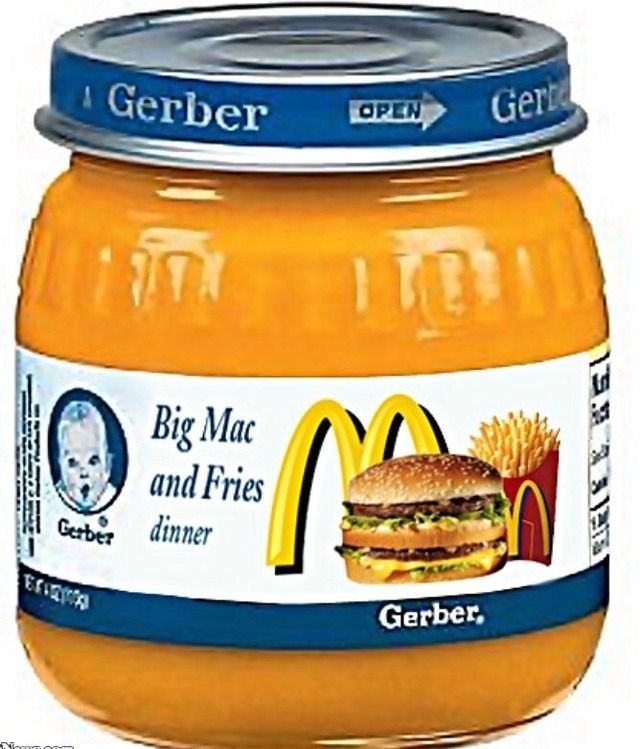 Wait until this reflex disappears (typically when babies are 4–6 months old).
Wait until this reflex disappears (typically when babies are 4–6 months old). - Can your baby support their own head? To eat solid food, an infant needs good head and neck control and should be able to sit up.
- Is your baby interested in food? Babies who stare, reach and grab, and open their mouths for food are ready to try solid foods.
If your doctor gives the go-ahead but your baby seems frustrated or uninterested in solid foods, try waiting a few days before trying again. Breast milk and formula will still meet nutritional needs as your baby learns to eat solid foods. But after 6 months, babies need the added nutrition — like iron and zinc — that solid foods provide.
Do not add cereal or other food to your baby's bottle because it can lead to too much weight gain.
Watch for signs that your child is hungry or full. Respond to these cues and let your child stop when full. A child who is full may suck with less enthusiasm, stop, or turn away from the breast or the bottle. With solid foods, they may turn away, refuse to open their mouth, or spit the food out.
With solid foods, they may turn away, refuse to open their mouth, or spit the food out.
How Should I Start Feeding My Baby Solid Foods?
When your baby is ready and the doctor says it’s OK to try solid foods, pick a time of day when your baby is not tired or cranky. You want your baby to be a little hungry, but not so hungry that they’re upset. So you might want to give your baby a little breast milk or formula first.
Have your baby sit supported in your lap or in a high chair with a safety strap.
Most babies' first food is iron-fortified infant single-grain cereal mixed with breast milk or formula. Place the spoon near your baby's lips, and let the baby smell and taste it. Don't be surprised if this first spoonful is rejected. Wait a minute and try again. Most food offered to your baby at this age will end up on the baby's chin, bib, or high-chair tray. Again, this is just an introduction.
When your little one gets the hang of eating cereal off a spoon, it may be time to try single-ingredient puréed meat, vegetables, or fruit.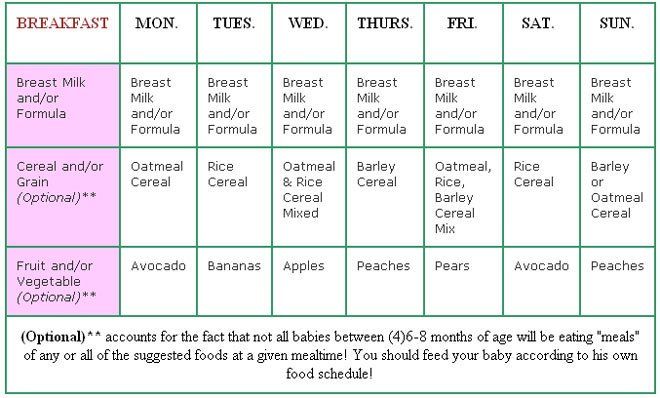 The order in which you give them doesn't matter, but go slow. Offer foods that are high in iron and zinc — such as meat, poultry, eggs, and beans — especially if your baby is breastfeeding. Try one food at a time and wait several days before trying something else new. This will let you identify any foods that your baby may be allergic to.
The order in which you give them doesn't matter, but go slow. Offer foods that are high in iron and zinc — such as meat, poultry, eggs, and beans — especially if your baby is breastfeeding. Try one food at a time and wait several days before trying something else new. This will let you identify any foods that your baby may be allergic to.
Which Foods Should I Avoid?
Foods that are more likely to cause allergies can be among the foods you introduce to your baby. These include peanuts, eggs, cow’s milk, seafood, nuts, wheat, and soy. Waiting to start these foods does not prevent food allergies. Talk to your doctor if you’re concerned about food allergies, especially if any close family members have allergies, food allergies, or allergy-related conditions, like eczema or asthma.
Infants with severe eczema or egg allergies are more likely to have allergies to peanuts. Talk to your doctor about how and when to introduce these foods to your child.
Possible signs of food allergy or allergic reactions include:
- rash
- bloating or an increase in gassiness
- diarrhea
- vomiting
Get medical care right away if your baby has a more severe allergic reaction, like hives, drooling, wheezing, or trouble breathing.
If your child has any type of reaction to a food, don't offer that food again until you talk with your doctor.
Babies shouldn't have:
- foods with added sugars and no-calorie sweeteners
- high-sodium foods
- honey, until after the first birthday. It can cause botulism in babies.
- unpasteurized juice, milk, yogurt, or cheese
- regular cow's milk or soy beverages before 12 months instead of breast milk or formula. It’s OK to offer pasteurized yogurt and cheese.
- foods that may cause choking, such as hot dogs, raw carrots, grapes, popcorn, and nuts
Tips for Feeding Your Baby Solid Foods
With the hectic pace of family life, most parents try commercially prepared baby foods at first. They come in small, convenient containers, and manufacturers must meet strict safety and nutrition guidelines.
If you prepare your own baby foods at home, here are some things to keep in mind:
- Follow the rules for food safety, including washing your hands well and often.

- To preserve the nutrients in your baby's food, cook it in ways that keep the most vitamins and minerals. Try steaming or baking fruits and vegetables instead of boiling, which washes away the nutrients.
- Freeze portions that you aren't going to use right away.
- Whether you buy the baby food or make it yourself, texture and consistency are important. At first, babies should have finely puréed single-ingredient foods. (Just applesauce, for example, not apples and pears mixed together.)
- After your baby is eating individual foods, it's OK to offer a puréed mix of two foods. As babies get older, they will learn to eat a greater variety of tastes and textures.
- If you use prepared baby food in jars, spoon some of the food into a bowl to feed your baby. Do not feed your baby right from the jar — bacteria from the baby's mouth can contaminate the remaining food. If you refrigerate opened jars of baby food, it's best to throw away anything not eaten within a day or two.
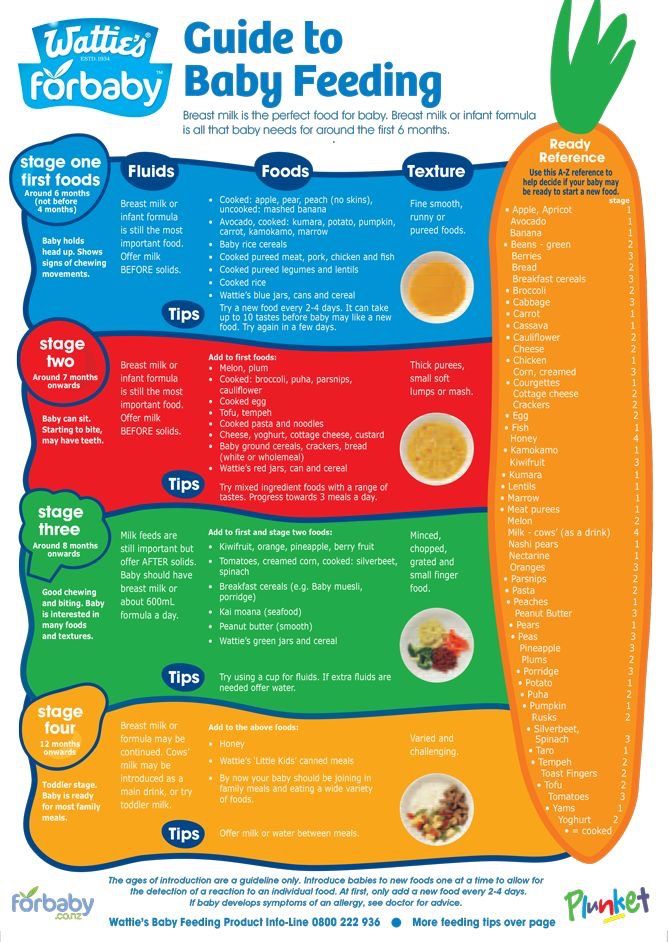
- Around 6 months of age is a good time for your baby to try a cup. You might need to try a few cups to find one that works for your child. Use water at first to avoid messy clean-ups. Do not give juice to infants younger than 12 months.
Over the next few months, introduce a variety of foods from all the food groups. If your baby doesn't seem to like something, don’t give up. It can take 8 to 10 tries or more before babies learn to like new foods.
Mix by child's age: how to choose the right one?
Bulavina Ekaterina Borisovna
pediatrician of the 1st category
The classification of milk formulas by age is based on the changing needs of the child in the process of growth and development. How big is the difference between mixtures for newborns and grown-up babies, when to give this or that formula and how adaptation is connected with them, says pediatrician Ekaterina Borisovna Bulavina.
— Ekaterina Borisovna, why do manufacturers make different mixtures for children of different ages?
— The production of infant formula is based on the properties of breast milk, the composition of which changes throughout the entire lactation period and largely depends on the energy needs of the child, the state of health of the mother, her psycho-emotional state, the usefulness of the diet and many other factors.
How breast milk changes as the baby ages
- Modern infant formulas are also developed based on the physiological needs of the child. It is extremely difficult to replace colostrum, but baby food manufacturers try to adapt the formula as much as possible to the needs of a child from 0 to 6 months, from 6 to 12 months, and also create preformulas for premature babies and follow-up formulas for children after a year.
— What is the difference between formulas for children of different ages and what is the formula for infant formula?
— Formula refers to the composition of infant formula that meets a certain standard. Each formula has its own number according to a specific age period.
Milk formula classification by age
| Starter formulas, or formulas “1”, for the first half of the year, from 0 to 6 months | Infant formula from age 0 is adapted in composition to mature mother's milk, but, unfortunately, cannot replace valuable colostrum. Therefore, early attachment of the baby to the breast already in the delivery room and feeding with colostrum in the first days is very important. Therefore, early attachment of the baby to the breast already in the delivery room and feeding with colostrum in the first days is very important. |
| Subsequent mixtures, or Formula 2, for the second half of the year, from 6 to 12 months | Differ in a lower protein content, but higher calorie content due to fat and carbohydrate components, contain more vitamins and minerals, which meets the needs of a growing child. |
| Follow-up formulas (baby milk) or Formula 3 - 1 to 3 years | Used as an additional source of protein, calcium, phosphorus, B vitamins, iron and other important trace elements, polyunsaturated fatty acids. |
| Preterm formulas or preformulas for extremely low birth weight babies | They are high in proteins, fats and carbohydrates, some trace elements such as iron, calcium, vitamin D, as well as high in calories and reduced in lactose. |
- This age classification of mixtures corresponds to the physiological needs of the child at different stages of development. And it is the same for all manufacturers, and already within each formula, variations are possible in accordance with the solution of a specific problem. For example, hypoallergenic, sour-milk, lactose-free, anti-reflux and other mixtures are produced.
And it is the same for all manufacturers, and already within each formula, variations are possible in accordance with the solution of a specific problem. For example, hypoallergenic, sour-milk, lactose-free, anti-reflux and other mixtures are produced.
- Is it possible to give the mixture out of age?
— It is very important to feed your baby with formula appropriate for his age. An improperly selected mixture can provoke the development of serious diseases in an infant.
- The composition of the first formula takes into account the physiological immaturity of the gastrointestinal tract of the newborn. The second formula is not suitable for him either in terms of calories or in terms of quality composition due to the high load on the gastrointestinal tract and kidneys.
- Feeding the first formula to a child older than six months is also undesirable: the composition of the second formula is more suitable for this age. For example, the amount of protein has been increased for the harmonious growth of the baby.

Signs of disorders that may occur if formula is not given for age:
- abnormal - too little or too much - weight gain;
- psychomotor retardation;
- lethargy, apathy, disinterest in what is happening around;
- problems with the gastrointestinal tract - colic, regurgitation, pain, constipation or diarrhea, mucus impurities, streaks of blood in the stool.
- Ekaterina Borisovna, is it possible to transfer a child to a new formula on his own, without consulting a doctor?
— When switching to a new age-based formula for a healthy child, consultation with a specialist is not necessary. A baby who has digestive problems, low weight gain, signs of an allergy or other pathology should discuss changing the mixture with a pediatrician. You may need a different type of formula from a different manufacturer to address your baby's specific health concerns. For example, choose a hypoallergenic or hydrolyzed mixture for an allergic child.
If the child tolerates the mixture of the initial formula well, then when switching to the second formula, it is better to choose a mixture from the same manufacturer. Changing the mixture within the same brand is easier to tolerate.
— How to switch to a new formula: abruptly or gradually?
- The transition to a new formula by age is carried out gradually for babies both on artificial and mixed feeding. To begin with, 10 ml of a new mixture is introduced into the first feeding and the condition of the baby is observed during the day. With a normal reaction of the body, gradually bring the volume of the mixture to the daily norm. There are different schemes:
— What should parents do if their child refuses a new formula?
- Initially, you should make sure that the refusal of the mixture is not related to the health of the baby. Perhaps he is teething, he is ill, or his stomach is bothering him. Then the failure is quite understandable and the introduction of a new mixture can be postponed for some time.
If everything is in order with health, then you need to gently but persistently offer new food, observing the recommended intervals between feedings, so that the baby has time to get hungry. Not a single child has voluntarily starved himself to death. In the event of a categorical refusal of the baby, a pediatrician's consultation is necessary for the possible selection of another mixture.
- Let's talk about adapted infant formulas. What are their features and benefits?
— Adapted milk formulas are those whose composition differs minimally from the composition of human breast milk. They are prepared on the basis of cow and goat milk, but the final product differs significantly from the original raw material.
Adapted milk formulas
Partially adapted milk formulas
- After a year, it is possible to add a partially adapted mixture to the child's diet, since the body is already ready to assimilate it. The main differences between the mixture for children older than a year are the presence of a larger amount of casein protein, sucrose, and less stringent requirements for the fat composition. Otherwise, it repeats the composition of mixtures up to a year and is also enriched with additional components, vitamins, minerals in accordance with the physiological needs of the child.
Otherwise, it repeats the composition of mixtures up to a year and is also enriched with additional components, vitamins, minerals in accordance with the physiological needs of the child.
Non-adapted baby foods
— Feeding a child of the first year of life with non-adapted products in the form of whole cow or goat milk is unacceptable. Whole milk contains more protein and some minerals than breast milk, which puts an excessive burden on immature kidneys and provokes metabolic changes in the baby's body. There are colitis, constipation, diarrhea, regurgitation, the kidneys do not work properly and remove useful trace elements that are so necessary for the child. Whole milk proteins can cause allergic reactions. Also, cow's milk has too much calcium and phosphorus, which creates an additional burden on the excretory organs. But there is not enough iron in it. Children fed unadapted mixtures usually suffer from anemia.
In terms of nutritional value, goat's milk is close to cow's, but it has more polyunsaturated fatty acids and a higher content of medium-chain fatty acids, which are much more easily absorbed by the body.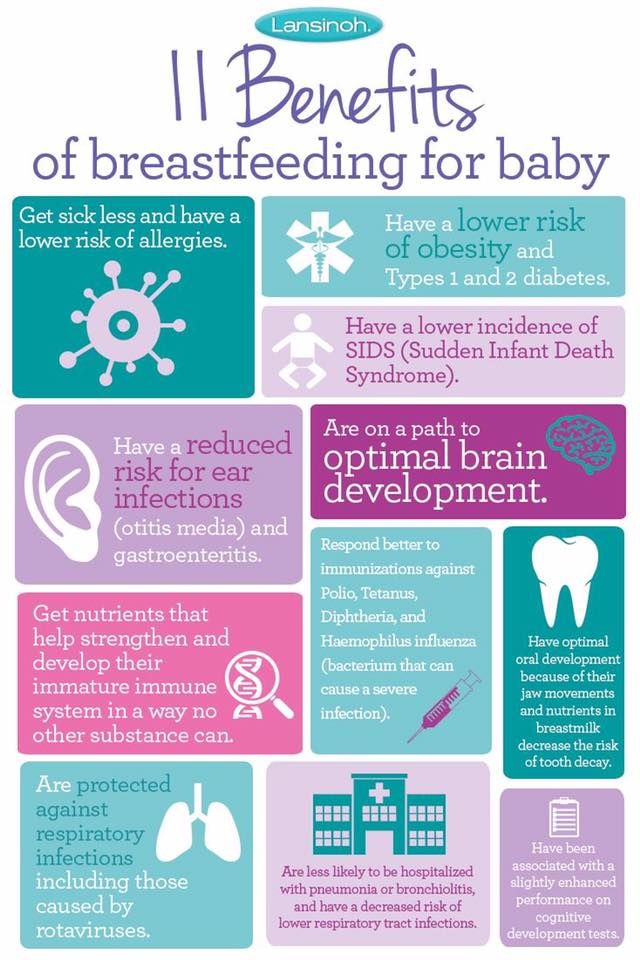 However, it lacks folic acid, which is compensated in the composition of adapted mixtures.
However, it lacks folic acid, which is compensated in the composition of adapted mixtures.
Read also
- about what to choose for baby food, whole milk or adapted formulas.
- How to choose the best infant formula?
— Before the introduction of infant formula, almost every mother tries to thoroughly study this issue so as not to harm her baby. And, of course, the help of a doctor who knows the child from birth is invaluable here.
The choice is based on three main components
- Doctor's recommendations for the health and age of the child.
- Quantitative and qualitative composition of the mixture.
- Proper use of the mixture.
All manufacturers indicate on the packaging the numbers of the formulas "1", "2", "3" in accordance with the needs of the child, as well as the age and method of preparing the formula. In no case should you break the concentration and prepare a thicker mixture of the first formula for babies older than six months, or, conversely, it is unacceptable to buy a mixture marked "2" for a small newborn child so that he gains weight better.
Important characteristics of the adapted mixture
- Demineralized whey.
- Protein content - no more than 1.3-1.4 g / l for babies from birth and up to 1.8-2 g / l for children older than six months.
- The ratio of whey protein and casein is 60:40 in formulas for feeding in the first half of the year and 50:50 in formulas for feeding in the second half of the year.
- The presence of L-carnitine, nucleotides, pre- and probiotics is desirable.
— What is the difference between MAMAKO ® Premium milk formulas?
- The line of these mixtures is represented by three formulas that have an adapted composition according to the age needs of the child.
— It is worth noting that the fat component of goat mixtures plays an important role in the development of vision and the immune system. And it is very important to enrich the mixture of docosahexaenoic (DHA) and arachidonic (ARA) acids - their intake with food is very valuable for the baby's body. The content of such fatty acids in mixtures MAMAKO ® Premium of different formulas from "1" to "3" also decreases slightly, since from 4-6 months the child already receives complementary foods and other vegetable oils, which can serve as a source of polyunsaturated fatty acids.
And it is very important to enrich the mixture of docosahexaenoic (DHA) and arachidonic (ARA) acids - their intake with food is very valuable for the baby's body. The content of such fatty acids in mixtures MAMAKO ® Premium of different formulas from "1" to "3" also decreases slightly, since from 4-6 months the child already receives complementary foods and other vegetable oils, which can serve as a source of polyunsaturated fatty acids.
In addition, all formulas are additionally enriched with
- Lutein - necessary for the proper formation of the organs of vision. It has antioxidant activity and protects the retina from the harmful effects of ultraviolet rays.
- Oligosaccharides - these carbohydrates serve as a nutrient medium for the growth of beneficial microflora, contribute to comfortable digestion of the baby, and prevent constipation.
- Probiotics - bifidobacteria prevent the growth of opportunistic flora, have a positive effect on the formation of one's own microbiota and, as a result, contribute to comfortable digestion.

- Nucleotides, L-carnitine, taurine, vitamins and minerals according to age requirements.
Modern advances in science in the field of nutrition and pediatrics allow manufacturers of baby food to create products that are maximally adapted in composition to the composition of breast milk. One way to adapt is to divide mixtures into formulas in accordance with the physiological needs of the child of each age period. It is very important to follow the recommendations when feeding a child with a formula according to age. An inappropriate mixture can lead to the development of pathological conditions in an infant. For the harmonious growth and development of a child of the first year of life, it is necessary to feed with age-adapted, and therefore, in terms of macro- and microelement composition, milk mixtures.
* Breast milk is the best food for babies. WHO recommends exclusive breastfeeding for the first 6 months of a child's life and continued breastfeeding after complementary foods are introduced until the age of 2 years.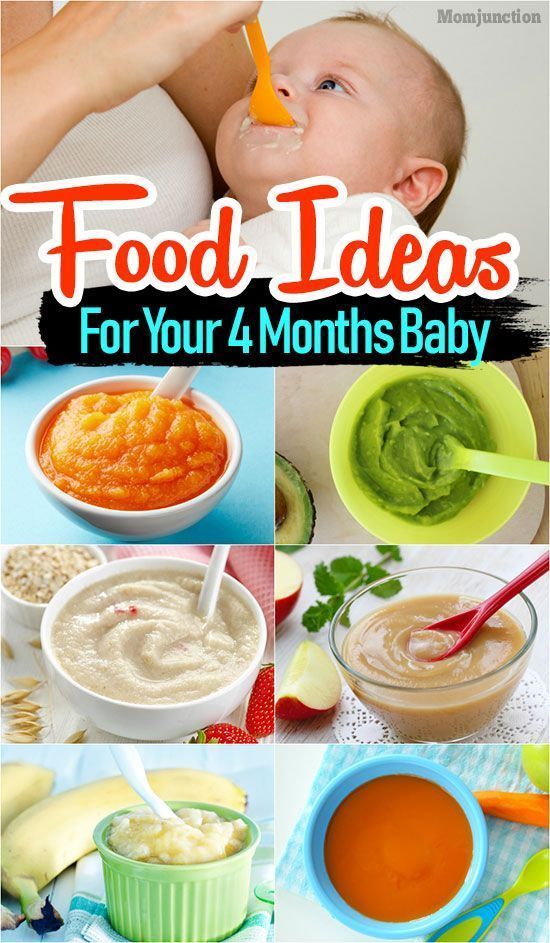 Before introducing new products into the baby's diet, you should consult with a specialist. The material is for informational purposes and cannot replace the advice of a healthcare professional. For feeding children from birth. The product is certified.
Before introducing new products into the baby's diet, you should consult with a specialist. The material is for informational purposes and cannot replace the advice of a healthcare professional. For feeding children from birth. The product is certified.
#baby formulas #Tips for Mom
How to choose a feeding utensil
#Complementary food
Kizino Polina Alexandrovna
pediatrician, perinatal psychologist
How do I know if formula is right for my baby?
#Baby formulas #pregnancy
Shchelkunova Valeriya Maksimovna
neonatologist-resuscitator, specialist in children's medical massage, blogger, founder of the online school for moms Hellobaby_school
In search of the best mixture - mom's mistakes
#Baby formula
Butuzova Olesya Vladimirovna
pediatrician
See all
View all
How do I know if formula is right for my baby?
# Infant formula # pregnancy
Shchelkunova Valeriya Maksimovna
neonatologist-resuscitator, specialist in children's medical massage, blogger, founder of the online school for moms Hellobaby_school
In search of a better mixture - mistakes of moms
# Infant formula
Butuzova Olesya Vladimirovna
pediatrician
See all
How to choose a feeding utensil
# Lure
Kizino Polina Alexandrovna
pediatrician, perinatal psychologist
See all
View all
See all
Who is a nutritionist and how to eat right: what is proper nutrition, what you need to eat to lose weight - March 16, 2023
All news “My husband and I just drank beer in the evenings”: confession of a woman who unknowingly drank herself and lost everything“I look and understand that it is him!” A maniac who executed victims with electricity was released and got a job as a security guard in shopping center
Passepartout, how many keys do we have? Solve 9 difficult riddles from Fort Boyard
The judicial investigation into the case of the ex-heads of the Ministry of Emergency Situations of Kuzbass about the fire in the Winter Cherry has been completed. What's next?
What's next?
Firefighter Genin with cancer may be transferred to a hospital in Kemerovo — source
“Your food was a blow to me”: the story of Italian ballet star Marcello Pelizzoni, who moved to Siberia
Likstanov, head doctor of hospitals in Kuzbass, commented on the deprivation of his doctorate status
Kemerovo cardiologist spoke about the signs of a stroke and the causes of death from heart disease
Steal 561 million and disappear in Spain: the story of a robber banker who never got rich
"Mom, I'm bored!" Kemerovo, where you can go on school holidays
A parade of planets will take place in the sky over Kuzbass - when you can see it
Former gas station employee will be tried for stealing 83 thousand liters of fuel from the employer
Shall we have a crunch? Doctors about which chips can be called healthy and how often they can be eaten
Honored the memory of the dead: a memorial service for the victims of the fire in the Winter Cherry was held in Kemerovo
Magnetic storms will cover the country at the weekend: who is at risk
« Wrote incorrect wording”: The Ministry of Health reported that the Yuventa polyclinic in Kemerovo would not be closed
0002 It is impossible to leave to stay: Leninsk-Kuznetsky
The main problem of Crimea remained unresolved: how much does a vacation on the peninsula cost and whether it is worth going there
The mobilized returned home and read in social networks that he was a deviationist. In court, he forced gossips to pay
In court, he forced gossips to pay
Blogger Ilya Varlamov became a foreign agent. There are five more points in the new register of the Ministry of Justice
NATO urged to prepare for a protracted conflict in Ukraine: NWO news for March 23
“I don’t get sick, I don’t go on vacation”: a girl created by neural networks became the leader on Russian TV. How does she look?
Anthrax outbreaks in Russia have been localized. Should we expect further spread of the disease?
Is it winter or spring? Learned what kind of weather Kuzbass residents should expect at the weekend
Open the closet and you will understand everything: what your favorite colors in clothes say about you - vulnerability, temper and even dislike for the regime
Kuzbass residents spent 4 billion on jewelry. We tell you what jewelry they buy more often total
Maternity, hospital and child allowances in Russia will grow by 1.5 times
Pensions in Russia will increase by 13. 5%. But not all
5%. But not all
minimum wages will be indexed by 18.5% in 2024
“We immediately realized that it was falling.” How the plane crashed on the shore of the pond - the story of the crash
We are planning May holidays: top 5 countries where you can fly without a visa
A four-year-old girl ran out of the window from her apartment in search of her mother in Novokuznetsk
Don't break your head: 10 confusing (but fun) logic problems
The head of the Cabinet of Ministers spoke to the State Duma for 4 hours. What Mishustin promised
More than 30 thousand children will go to Kuzbass schools: how and when to apply for first grade / 116.RU
Share
With the advent of spring, many people are increasingly starting to think about bringing their body back to normal for the upcoming beach season. The first thing they start looking for in such cases is diets and weight loss tips. The editors of NGS42 collected the most popular requests on this topic and asked Anastasia Kovaleva, Kemerovo trainer-nutritionist of the Olympia Fitness gym, to answer them.
- Nutritionist - a consultant who helps a person who wants to lose weight or diversify their diet. It helps to balance the diet so that there are more vegetables, talks about the benefits of frequent drinking of water, explains the principles of the interaction of proteins, fats and carbohydrates. A dietitian is a medical professional who can make diagnoses and prescribe medication if necessary.
— You can, but what will happen to the body after that? Muscles will lack tone, excess skin will hang down. Training will help put everything in order so that a person can enjoy the reflection in the mirror.
— It is important to eat a balanced diet. To do this, you need to understand that carbohydrates are divided into fast and slow, and protein is the main building material for muscles, more saturation comes from it. If this is not taken into account, then the process of losing weight will be slower, and the body will not be able to receive all the necessary macro- and micronutrients. With proper nutrition, it is recommended to remove fried, starchy foods from the diet, reduce sweets - no more than 5–10% of the daily diet is acceptable.
With proper nutrition, it is recommended to remove fried, starchy foods from the diet, reduce sweets - no more than 5–10% of the daily diet is acceptable.
Photo: Maxim Serkov / NGS42.RU
Share
— “Right” foods are those from which the body not only takes energy, but is also saturated with various elements. But in general, yes, there are especially recommended foods: the same eggs, meat, dairy products, cereals, vegetables are required.
I would also like to note that in every store there are counters with so-called PP products, which are supposedly super healthy and can be eaten in unlimited quantities. This is wrong. For example, there are various "sports bars" that give the body about 270 kcal, but there are also ordinary chocolates, where there are fewer calories. Sometimes a PP product is worse than some other, it is important to understand what you are buying.
— There is a myth: there is something that you will eat and lose weight, like pineapple or grapefruit.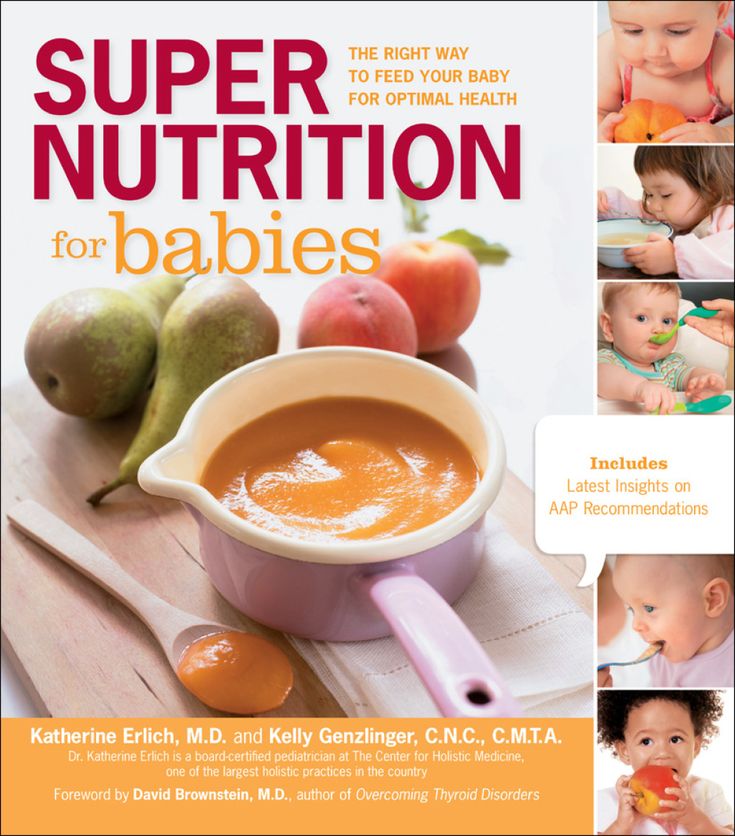 People come up with negative calorie foods, like celery smoothies. But if there is no shortage, there will be no desired success. No fat burning foods.
People come up with negative calorie foods, like celery smoothies. But if there is no shortage, there will be no desired success. No fat burning foods.
— There is a “healthy plate” principle, which should contain 50% vegetables, 25% cereals and the same amount of protein, plus fats. It is necessary to constantly maintain this balance and not allow that today I will eat something sweet, and tomorrow I will eat shawarma with something alcoholic. By the way, often people think that vegetables are a waste of money, but this is not so.
- There are no such programs. Because people have peculiarities of the body, intolerance to some products, dislike for some food. Therefore, it is important when drawing up a diet to take into account all these nuances. So that a person not only eats, choking on conventional chicken and buckwheat, because he needs it, but also enjoys it.
A little bit more and the video will load
Video: Maxim Serkov / NGS42.RU
— Sometimes they are found there frankly anti-healthy. There are those where, in all seriousness, they offer one apple for breakfast, juice for lunch, and a glass of kefir for dinner. And there are people who blindly try to follow these recommendations. It is better to buy a regular set of products and cook a variety of dishes from them so that there are no breakdowns and thoughts about what to eat. You need to plan meals for tomorrow, so that when you go to the store, you won’t be tempted by some yummy.
There are those where, in all seriousness, they offer one apple for breakfast, juice for lunch, and a glass of kefir for dinner. And there are people who blindly try to follow these recommendations. It is better to buy a regular set of products and cook a variety of dishes from them so that there are no breakdowns and thoughts about what to eat. You need to plan meals for tomorrow, so that when you go to the store, you won’t be tempted by some yummy.
In any case, you should contact a gastroenterologist so that the diet from the Internet does not harm the body. Responsibility for health lies only with you, because those who posted this menu are indifferent to the fate of the people who believed them.
— Because alcohol is generally undesirable to drink. In addition, there are extra calories. In proteins and carbohydrates, we have four kcal per gram, in fats - nine, and in alcohol - seven. Plus, while drinking, snacks come into play, appetite increases, and a person begins to overeat. And the next day he gets dehydrated, in pain. You need to look for another source of high, not alcohol, but sports, for example.
And the next day he gets dehydrated, in pain. You need to look for another source of high, not alcohol, but sports, for example.
- This is marketing. Now it is fashionable to drink something from shakers, there is something “super effective” for weight loss with an instant effect. But nothing is better than a calorie deficit, a balanced diet and a healthy attitude to food. It is better to buy such a grocery basket for the same money that you will eat and enjoy the taste for a long time.
— It is possible, but the quality of the body and organism will be poor. A calorie deficit will remain, but at the same time the body will definitely not receive the necessary saturation, drowsiness and a lack of vitamins will appear. With such a diet, there will also be very little fiber. As a rule, if you crave sweets, it means that there is a deficiency of complex carbohydrates.
A little bit more and the video will load
Video: Maxim Serkov / NGS42.RU
— Partly. We must not forget that you can overeat with the right foods. Balance is important, you can’t eat one cereal and chicken. And athletes shouldn't overeat either. Eating a daily allowance at one time is far from a super solution.
We must not forget that you can overeat with the right foods. Balance is important, you can’t eat one cereal and chicken. And athletes shouldn't overeat either. Eating a daily allowance at one time is far from a super solution.
Not always. There are diets where a calorie deficit is important, but you can still include fast food in them, although this is not recommended. Such food contains a lot of fats that are useless for the body, for example, the same mayonnaise, sugar, flavor enhancers. Diet is not only about reducing food intake, but also about improving the quality of life. And fast food in this case will negatively affect the state of the body.
— At any age, you can achieve results, change your body and life. Remarks about age are said by those who are looking for an excuse. You can hear: "I'm 30, my metabolism is slow." No, your rhythm of life has changed, you started walking less and driving more. If you want to change this, park your car further from home, walk more, spend your leisure time actively. The same is true for people who have "big bones". It's not about genetics, it's about being lazy.
The same is true for people who have "big bones". It's not about genetics, it's about being lazy.
Last autumn, an NGS42 correspondent took part in the "Race of Siberians", for which, under the supervision of a coach, he lost more than 5 kg in three weeks. He spoke about his experience in our column. According to the results of the competition, his team took 29- th place out of 73 in the overall amateur standings, ahead of the team of the Ministry of Sports of Kuzbass and several sports clubs in the region.
Related
-
March 23, 2023, 07:29
Fitness or rocking chair? Kemerovo coach told how to lose weight by the summer and not harm your health -
March 22, 2023, 11:38 NGS42.RU passed the "Race of Siberians" in Kuzbass
-
August 18, 2022, 08:02
Personal experience. How a journalist lost weight on a strict diet with training - and what happened to the body in 2 weeks 2 simple habits, because of which you eat more than you really want
0 Alexander Levchuk
Leading correspondent NGS42.




